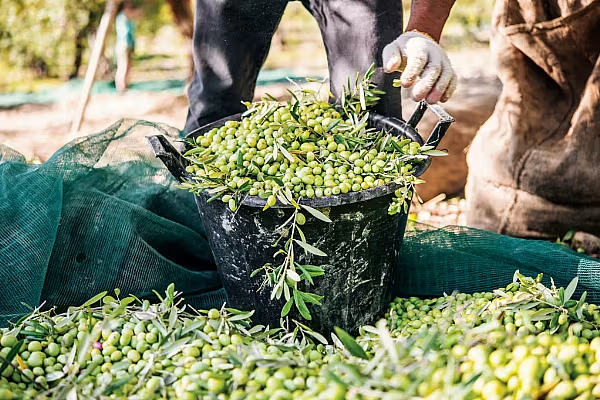With COVID-19 not the only factor at play in the Olive Oil sector, Nick Peksa of Cost Insights examines the industry’s prospects. This article first appeared in ESM Issue 4 2020.
Earlier this year, crude oil prices went negative for the first time in history. It was quite a surprise when the markets dramatically crashed; of course, this was followed by one of the biggest rallies the industry has ever seen.
The continuous period of reduced demand due to COVID-19 has resulted in US oil inventories rising to a record 538.1 million barrels.
Negatively priced raw materials are not a frequent occurrence. Those that do dip into minus figures have normally been dependant on demand from other industries. Whilst we won’t see negative prices for olive oil, we certainly have seen something of a price crash in slow motion over the past three years.
Olive oil prices have been falling since 2018 and are forecast to recover slightly in 2020/21. Prices have been kept low thanks primarily to a global oversupply of olive oil.
More recently in Europe, the price of olive oil has not been helped by the impact of COVID-19 interrupting the supply chain or by the market pressures created by the US implementing import tariffs.
There may be some good news on the horizon as the upcoming 2020/21 season holds the promise of a potential price recovery, but sadly not for entirely positive reasons.
Risk Factors
For the 2020/21 season, there are a number of factors that could reduce production levels of olive oil in Europe: weather, insects and disease.
Taking these in turn, Greece has experienced some unseasonably high temperatures, reaching 40°C in some regions. This adverse weather can affect the blossoming of trees and consequently the formation of fruit.
The productivity of olive trees is reduced as this thermal shock causes the moisture normally allocated for reproduction to retreat, to enable the trees to enter a preservation mode. It has been reported that in some regions of Greece, up to 40% of trees in olive groves have been affected by these climactic conditions.
In terms of insect infestation, olive growers in the Spanish region of Jaén have been warned about potential attacks from the olive moth (Prays oleae). Once the olive moth lays its eggs onto the leaves of a tree, extensive damage ensues as their larvae feast. This year, supported by the weather, has seen multiple reports of severe attacks by this moth.
Traditional measures against the spreading of the moth have been hindered this year by heavy rainfall in a number of regions when flowering was underway. If an aggressive response is not undertaken to curb the number of adult moths laying eggs, there might be a risk for a significant drop in production come harvest time in September.
Lastly, the final factor worth considering is the progression of Xylella fastidiosa, a bacterial disease spread by insects. This disease has killed millions of olive trees since 2013.
Whilst the bulk of this disease has been contained within the heel of Italy, strains have been discovered in France, Greece, Portugal, and Spain. Unless contained, future outbreaks could result in catastrophic damage, resulting in billions of euros of lost revenue.
Production Process
As the EU produces around two thirds of global olive oil production, some of the factors listed above could be significant. Overall, global olive oil production is expected to decrease for a third consecutive year in 2020/21.
Thankfully, there is one exception, Europe’s largest producer; Spain. The Spanish government is negotiating hard with the EU over proposed Common Agricultural Policy (CAP) budgets.
Spanish ministers would like to support the industry through the extension of storage schemes to reduce supply fluctuations in the marketplace.
These measures are not fully supported by industry, as there is a strong belief that the market should be driven by supply and demand. They believe EU funds could be better spent directly on innovation and the modernisation of the sector.
On the other side of the Mediterranean, two of the region’s largest producers – Tunisia and Turkey are poised to enter their off years, which in turn should lead to a 35% decrease in exports from North Africa.
Ending Thoughts
A resurgence in home cooking, as well as the gradual reopening of the foodservice sector, means that consumption of olive oil is expected to grow in line with historical trends and increase by 2% to 4% annually. Reduced production, a depletion of stocks in storage and some potential risks to supply, all point towards a firmer market recovery than the one which is forecast.
Thinking ahead, it would be prudent to contract forward – current prices are looking good.
For more information, contact nick.peksa@cost-insights.co.uk.
© 2020 European Supermarket Magazine – your source for the latest retail news. Article by Nick Peksa. Click subscribe to sign up to ESM: The European Supermarket Magazine














